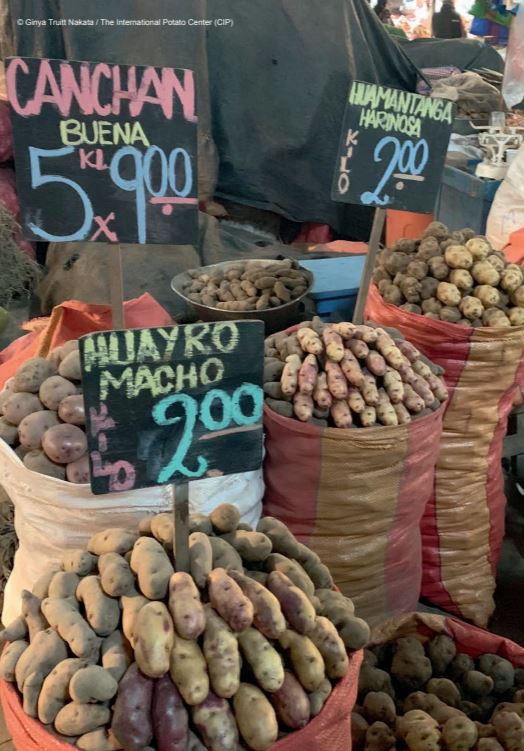 Released this week, the WWF’s Living Planet Report 2020 features a piece on the International Potato Center’s (CIP) work with potato wild species. The flagship report is the WWF’s biennial overview of the state of our natural world as tracked through trends in global wildlife abundance, and contributions from experts from around the world.
Released this week, the WWF’s Living Planet Report 2020 features a piece on the International Potato Center’s (CIP) work with potato wild species. The flagship report is the WWF’s biennial overview of the state of our natural world as tracked through trends in global wildlife abundance, and contributions from experts from around the world.
CIP’s work is presented in a short essay penned by Ginya Truitt Nakata, the director for Latin America and the Caribbean in a section dedicated to biodiversity and food security.
In the essay, Truitt Nakata highlights CIP’s research with native potatoes in the Andes, many of which possess traits and qualities that could serve future generations. She cites a recent study that found 13 wild species could be driven to extinction by weather extremes by 2055 – a dire forecast given that losing just one species can have catastrophic effects.
In the report, Marco Lambertini, Director General, WWF International, says COVID-19 has added dramatic urgency to confronting environmental challenges: “In the midst of a global pandemic, it is now more important than ever to take unprecedented and coordinated global action to halt and reverse the loss of biodiversity and wildlife populations across the globe by the end of the decade, and protect our future health and livelihoods. Our own survival increasingly depends on it.”
One key to our survival is robust and resilient food systems.
“For food security, natural habitat is fundamental,” Truitt Nakata says. “Wild species maintain the balance in our food systems and environment. The genetic tools of wild species help us fight off current and future threats. And who knows what else we’ll find in our research. We might find genetic code to fight future viruses or ensure sufficient harvests. But if we don’t maintain the habitat, we may lose those tools.”
More generally, Truitt Nakata says, CIP’s work with wild potato shows that agriculture and biodiversity conservation are intertwined, both providing for the other. “If we invest in the soil, then we make the land more productive. And investing in soil means taking care of the surrounding habitat to ensure that moisture and nutrients are retained. We feed the world and nurture the planet. And vice versa.”
CIP’s focus on in-situ (in its genebank) and ex-situ conservation (in the Andes) provides a well-rounded and safeguarded approach to maintaining agrobiodiversity for potatoes – the sixth most important crop in the world.
“The research we do is part of a CGIAR-wide objective to preserve agrobiodiversity and we’re very proud to have that work featured in the Living Planet Report,” says CIP’s Director General, Barbara Wells. “Together, we know the conservation, research and equitable sharing of this precious genetic material will be key to improving nutrition, inclusive growth and climate change adaptation throughout the world.”
Truitt Nakata’s essay is one of more than 125 contributions in the Living Planet Report from scientists around the world.
